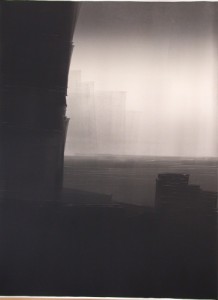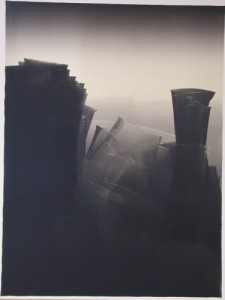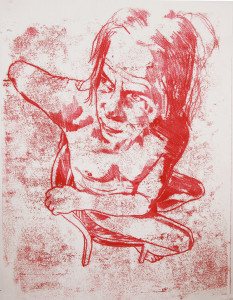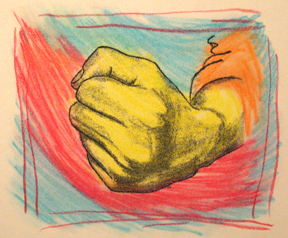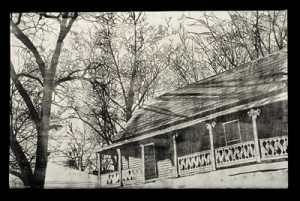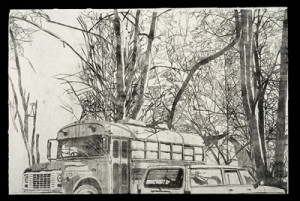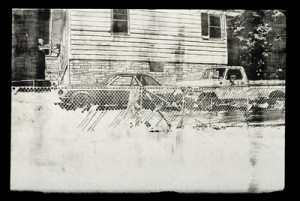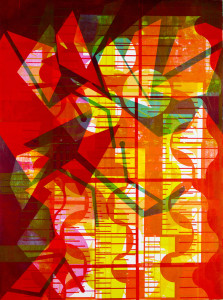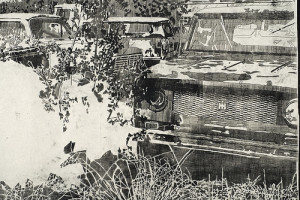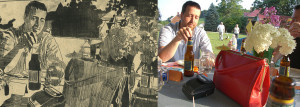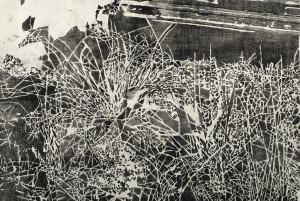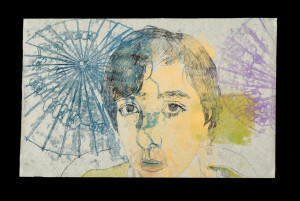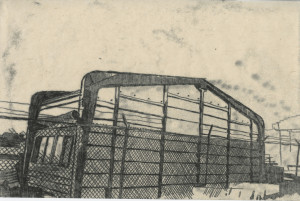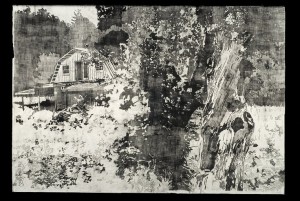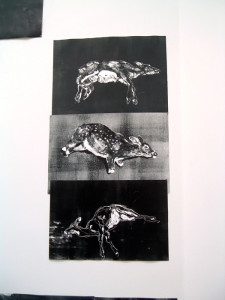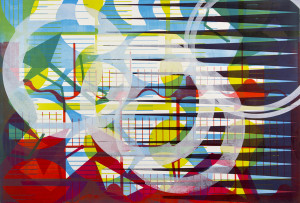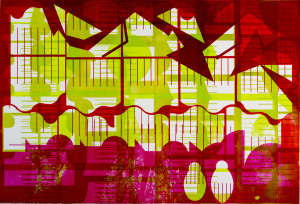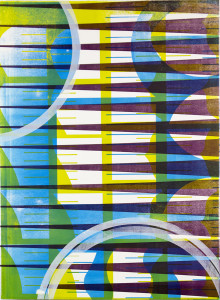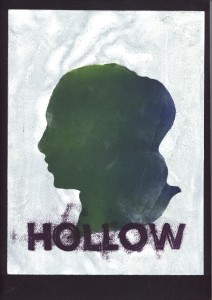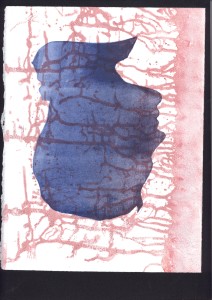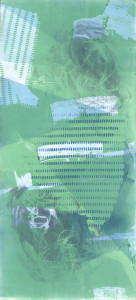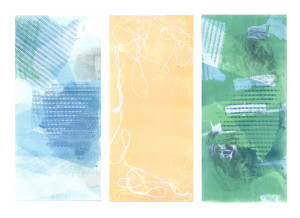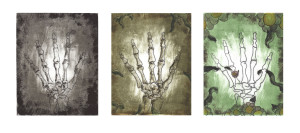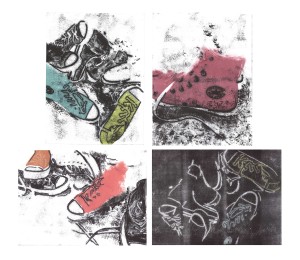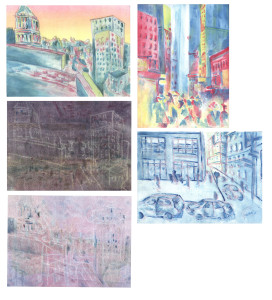Monotype vs. Monoprint: What’s the difference?
- Monotype: a one of a kind image made from a blank surface/no matrix.
- Monoprint: a one of a kind image made from a matrix with surface design/texture.

Above: Monotype, made from a piece of plexiglass

Above: Monoprint, made using a woodcut block
Supplies
- Plexiglass sheet
- BFK Rives or other cotton rag paper (with sizing, ideally)
- Tray or dish tub to soak paper (or spray bottle of water) and towels to blot paper
- Paintbrushes, pencils, ballpoint pens, dowels / skewers, paper towels / rags
- Newsprint
- Masking tape / painter’s tape
- Found textures (NO METAL or very thick materials of any kind can be run through the press – ask before you print)
- Found or hand-cut stencils
- Optional: use of existing woodcut and linocut blocks
Monotype Techniques
- Subtractive: Ink up your plate partially or fully using a brayer or roller and use rags, brushes, sticks, and other tools to remove ink from the plate, thereby creating an image.
- Direct Paint/Additive: you start with a clean slate and roll, paint, stamp, or otherwise apply ink to the surface to create an image.
- Masking: Ink up your plate, then before running through the press, apply a material to mask the ink such as torn/cut paper, string, lace, leaves, fabric, etc.
- Trace: Mix magnesium carbonate powder into ink until quite stiff. Ink up plexiglass fully or just in areas you wish to create additional marks on paper. Blot a piece of wet paper and lay face down onto the inked plate and place a resource image or scrap paper on the back of your blotted print paper. Using a pencil or pen, draw onto the backing resource image or scrap paper being careful not to bear down elsewhere on the page. Lift up paper when done, and the areas you drew over will have lifted ink onto the paper.
- Ghost: After printing any of the above processes, run the remaining ink through on the same paper in a different orientation or on a new piece of paper to create a “ghost print,” which is slightly lighter than the original image and often times even more beautiful!

